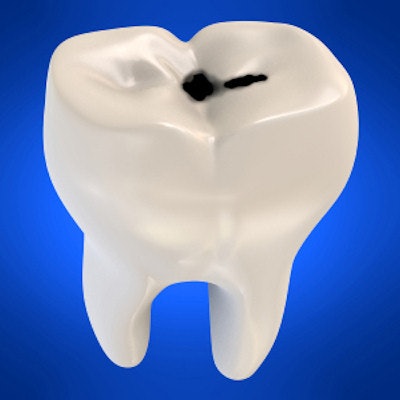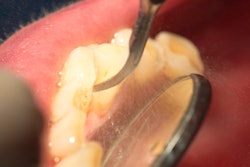
Research supports the benefits of minimally invasive dentistry for noncavitated carious lesions, but can providing such care damage your professional reputation and lower patient satisfaction? In a new study, patients who received noninvasive treatment were just as satisfied as those who underwent invasive treatment.
The lack of knowledge on the part of patients about noninvasive treatments for noncavitated early caries lesions, which include monitoring and oral hygiene instruction instead of the placement of restorations, may be a barrier to treatment and patient satisfaction with a dental office. However, researchers found that patients who were treated noninvasively reported satisfaction with it. Their research was published online in BMC Oral Health (March 27, 2017).
"Achieving patient satisfaction is multifactorial and critical to patient compliance and thus improved oral healthcare," wrote the authors, led by Sonya T. Mitchell, DMD, an associate professor and division head of general dentistry at the University of Alabama at Birmingham School of Dentistry.
Communicating the evidence
Recently published literature supports the use of minimally invasive dentistry to treat "early caries," which the authors defined in their study as "noncavitated lesions confined to the enamel." However, surgical procedures are reimbursed at higher rates than surveillance procedures consistent with evidence-based dentistry policy statements, and restoration placement can lead to the need for later placement of larger restorations, which can increase the risk of extraction, the authors explained.
Knowledge is limited about patient satisfaction regarding caries management and dental restorations, even though placement of dental restorations is among the most frequently performed dental procedures, they noted.
In previous research, the investigators interviewed 10 general dentists in Alabama who said they used invasive treatment (i.e., a dental restoration) for noncavitated early caries. During interviews, the dentists said they faced multiple barriers to providing noninvasive treatment:
- Patients need help understanding the benefits of noninvasive treatment.
- Practitioners fear negative judgment from other practitioners if a patient has a negative outcome and seeks treatment elsewhere.
- Practitioners don't want to be seen as outliers and would like to be able to provide a brochure to patients about noninvasive treatment.
The researchers then developed a patient satisfaction questionnaire on early-caries management and a handout for patients about noninvasive caries treatment. They also provided in-office education for these dentists about noninvasive treatment options and the most recent scientific evidence supporting them, and they encouraged them to begin using noninvasive treatment for early caries.
“This project has laid important groundwork for designing an intervention to improve early caries treatment by enhancing the translation of research findings into routine clinical practice.”
In the current study, the researchers used the questionnaire to compare satisfaction among adult patients who underwent invasive treatment and those who received noninvasive treatment for noncavitated early caries by the 10 dentists during the initial dental visit when the lesion was identified or the next appointment. All patients were provided with the education brochure.
The practitioners noted if they recommended a noninvasive treatment to the patient but the patient still requested invasive treatment. The study was designed to be "real world" with all treatment options offered considered standard of care. No effort was made to sway patient choices after they were told about the advantages and disadvantages of the treatment options.
Researchers collected data on 429 early caries lesions in 276 patients. All the dentists were male and had been practicing for a mean of 23.6 years. Patients ranged in age from 19 to 84, with 64% female, 88% white, and 79% with at least some dental insurance coverage.
The dentists reported moderate caries risk in 71% of patients, while 54% had only one early caries lesion. The occlusal surface was involved in 70% (302) of the lesions. Of those, 14% (42) were in the inner half of the enamel.
Monitoring and oral hygiene were the most commonly recommended treatments, advised for 99% of lesions. Restoration, either full or preventive resin, was recommended for just 13% (57) of lesions.
| Treatments recommended for 429 early caries lesions in 276 patients | ||
| Treatment recommended | Number of lesions | Percentage of lesions |
| Monitoring | 424 | 99% |
| Oral hygiene instruction | 426 | 99% |
| Applying or prescribing fluoride | 98 | 23% |
| Applying varnish | 9 | 2% |
| Sealant placement | 6 | 1% |
| Enameloplasty | 0 | 0% |
| Preventive resin restoration | 17 | 4% |
| Full restoration | 40 | 9% |
Of the 244 patients for which no restoration was recommended, seven chose restorative treatment anyway for 13 lesions. Three patients preferred a quick fix, one did not believe that noninvasive treatment would be effective, and four did not provide a reason.
"A dentist knowingly performing invasive treatment when current evidence-based literature supports minimally invasive dentistry raises ethical considerations," wrote the authors, noting that the need to consider the ethical consideration did not become apparent until patients refused noninvasive treatment during the study.
Satisfaction is key
The patient satisfaction questionnaire measured responses to 14 items, with the percentage of patients satisfied with each ranging from 84% to 99%. Three-fourths (208) of patients were satisfied with all items. Cost had the lowest level of patient satisfaction, at 84%. Two patients were not satisfied with any of the items.
| Percentage of patients who "agree" or "strongly agree" that they were satisfied with select questionnaire items | ||
| Questionnaire item | Number of satisfied patients | Percentage of satisfied patients |
| I am satisfied that I was able to ask questions about my dental treatment. | 272 | 99% |
| I am satisfied with the skill of my dentist. | 268 | 98% |
| I am satisfied with the friendliness of my dentist. | 266 | 97% |
| I am satisfied with the amount of trust that I can place in my dentist. | 265 | 96% |
| I am satisfied was free to make decisions about my dental problems. | 265 | 96% |
| I am satisfied with how dentist presented options for treatment. | 264 | 96% |
| I am satisfied with the treatment information and handouts provided. | 264 | 96% |
| I am satisfied that my dentist understood my concerns. | 263 | 95% |
| I am satisfied with the quality of tooth decay treatment received. | 262 | 95% |
| I am satisfied with the cost of my treatment. | 241 | 84% |
| I am satisfied with all. | 208 | 75% |
Overall patient satisfaction and satisfaction related to cost were the same for both those who received invasive treatment or noninvasive treatment. Whether patients had dental insurance did not affect satisfaction.
"Patient satisfaction is important because of its link to regular return visits, caregiver trust, perception of technical competence, and treatment outcomes," the authors wrote.
Communication may be just as instrumental in achieving patient satisfaction as technical skill, they said.
"This project has laid important groundwork for designing an intervention to improve early caries treatment by enhancing the translation of research findings into routine clinical practice," the authors concluded.



















